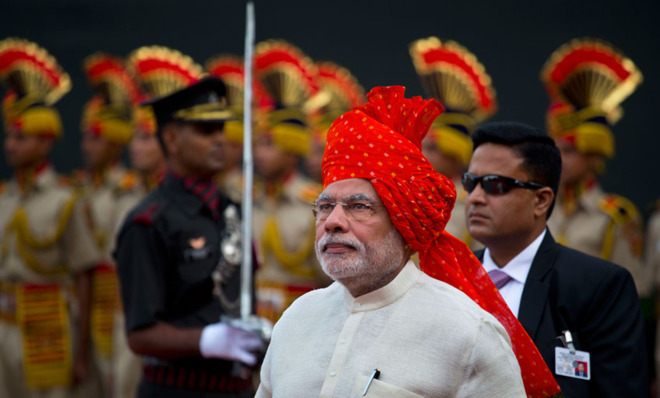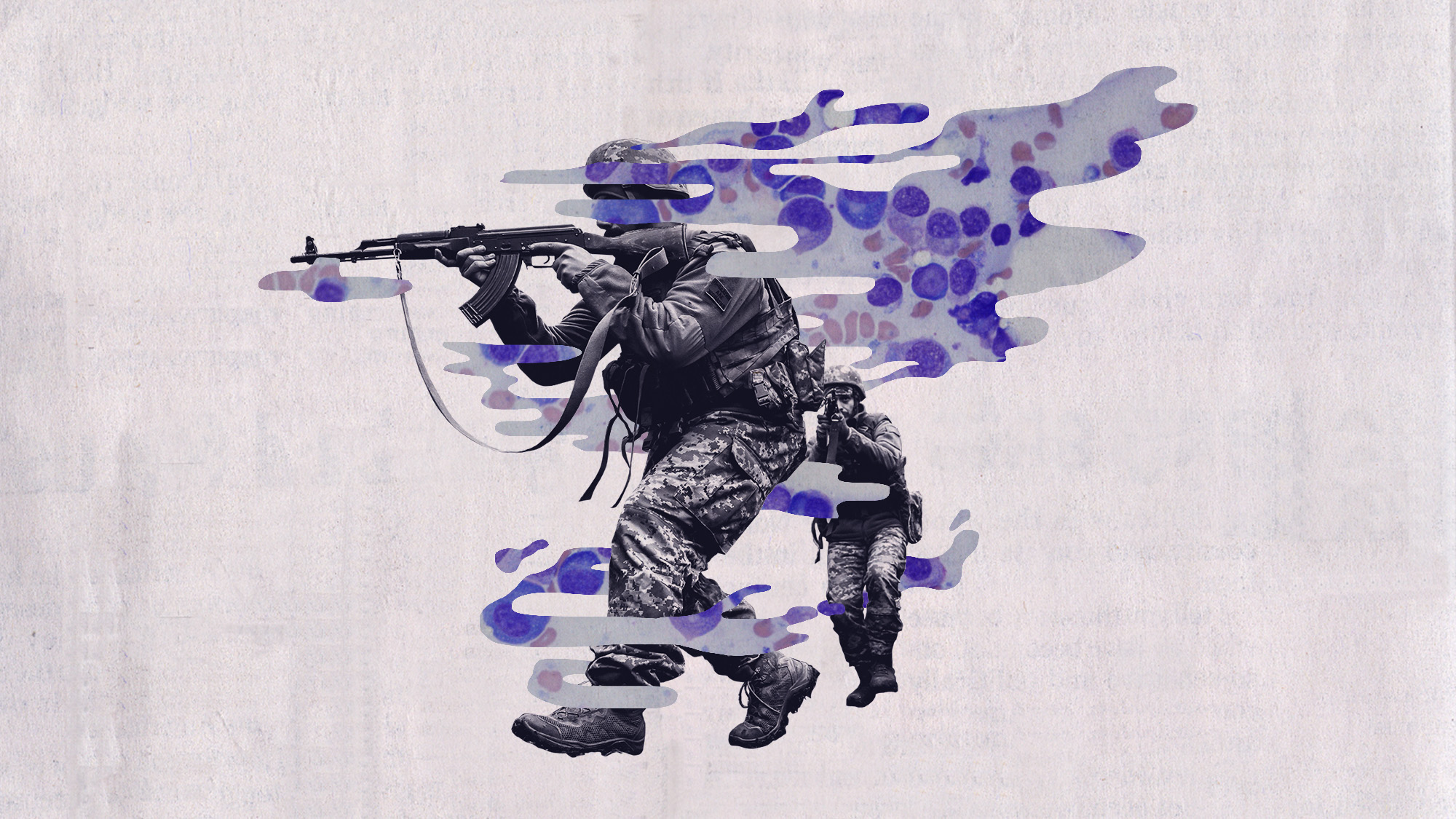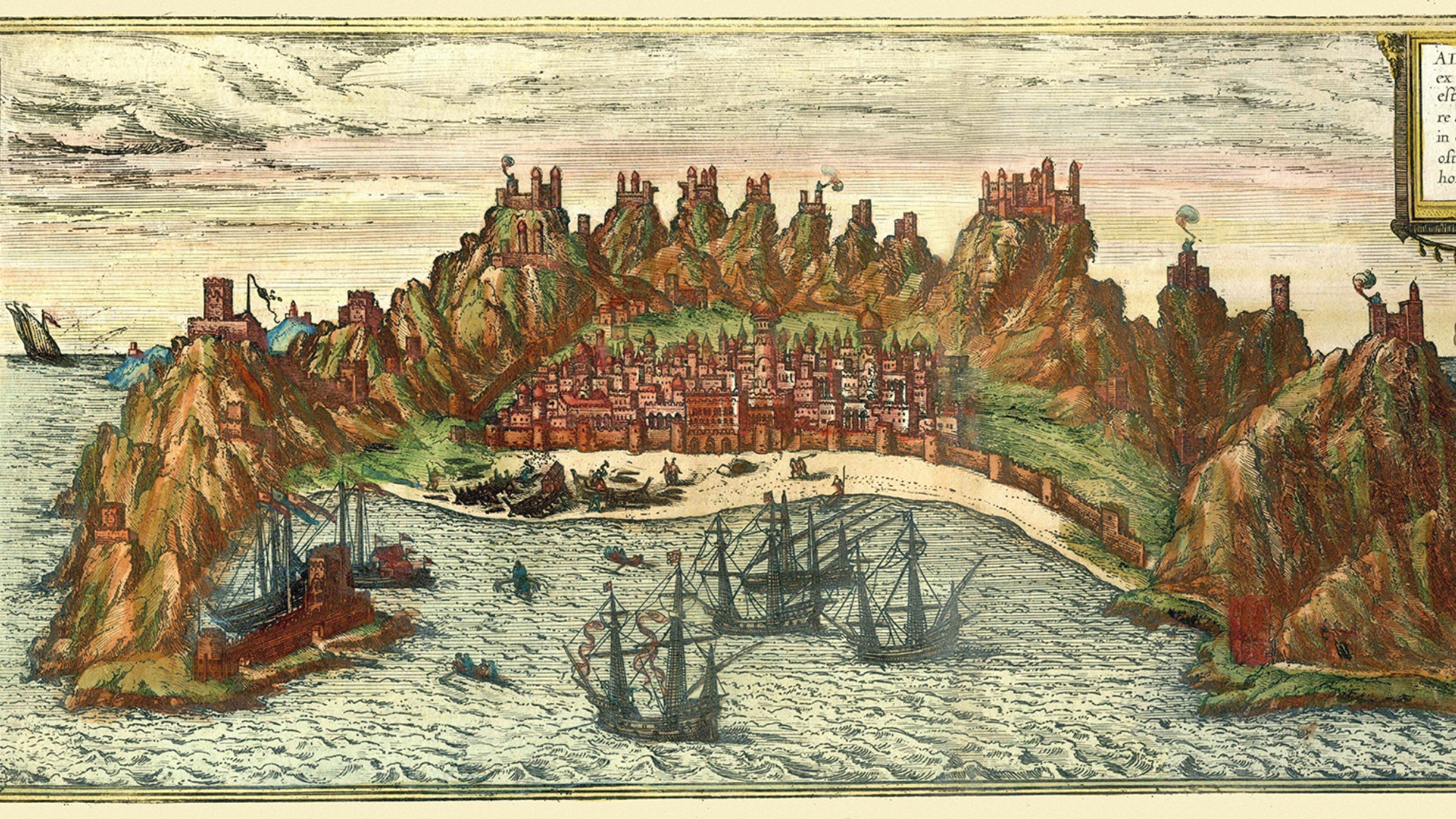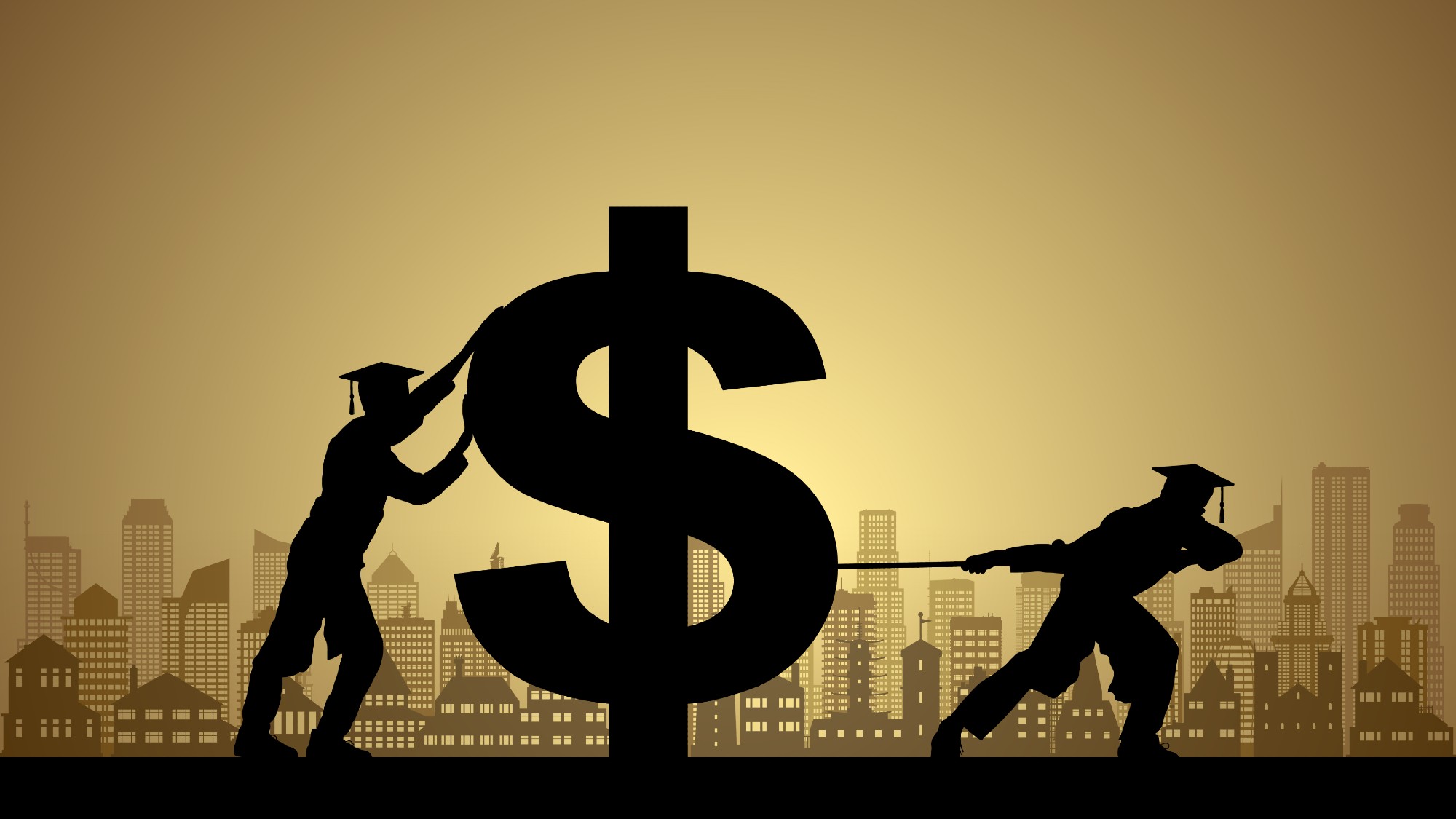The self-aggrandizing pomposity of India's Narendra Modi
It's on full display during his visit to the U.S. — and in his policies back home in India


It's odd for a political leader to take a victory lap in a foreign country. But that's exactly what Indian Prime Minister Narendra Modi, the Hindu nationalist who was elected in a landslide four months ago, will do while visiting the U.S. in a few days. He'll kick things off with a big rally on Sunday, when 20,000 Indian Americans will fete him at Madison Square Garden while thousands more (who couldn't get tickets for the sold-out event) watch the festivities on giant screens in Times Square.
Modi is officially here for the U.N. General Assembly meeting. But that's not what this is all about. From the Indian prime minister's perspective, the main purpose of this American extravaganza is surely to thumb his nose at the U.S. political establishment that placed a travel ban on him in 2005, after he presided over a pogrom of Muslims in the state of Gujarat when he was the chief minister. The Obama administration has been working to normalize relations with Modi — as it must and should — now that he is the duly elected leader of the world's most populous democracy. As such, the White House has singled him out for a dinner with the president (although Modi has declared that he won't eat anything because he's observing a nine-day religious fast, a flamboyant display of his fabled austerity).
Modi seems to have the autocrat's instinct to be the star attraction. His gaudy displays — literally unprecedented for visiting leaders — are not merely unbecoming. They are also deeply disturbing, because they highlight Modi's need for self aggrandizement. That does not bode well for the massive economic decentralization — the hands-off approach — that he himself touted as essential for offering a decent standard of living to all Indians.
The Week
Escape your echo chamber. Get the facts behind the news, plus analysis from multiple perspectives.

Sign up for The Week's Free Newsletters
From our morning news briefing to a weekly Good News Newsletter, get the best of The Week delivered directly to your inbox.
From our morning news briefing to a weekly Good News Newsletter, get the best of The Week delivered directly to your inbox.
Maybe he'll learn to keep a lid on this tendency as he grows in office. Right now, however, it seems to pervade his economic decisions, making even many of his cheerleaders nervous about his ability to lead India's socialist, centrally planned economy to a free market one. He has pushed symbolic measures — such as scrapping the 64-year-old Planning Commission, offering grades, headmaster-like, to the council of ministers, and ordering government staff to maintain full hours — but ducked anything resembling transformative reforms.
Indeed, there are plenty of areas where sound policy seems to have taken a backseat to Modi's need for control and ego-inflating. Here are four.
1. Trade. For a leader who came to office with a mandate to focus on domestic issues, Modi has spent an inordinate amount of time tending to foreign affairs. Besides America, he has already traveled to neighboring Nepal and Bhutan, led a delegation of handpicked Indian business tycoons to Japan, and hosted the Chinese President Xi Jenping. Modi insists this is necessary commercial diplomacy to open India to investment and trade.
Those are laudable goals. But they'd be far better served if he hadn't scuttled a major trade agreement with the World Trade Organization. The deal required all member nations to simultaneously harmonize their tariff structures and other trade barriers so that no country's food imports would face a competitive disadvantage in another's market.
A free daily email with the biggest news stories of the day – and the best features from TheWeek.com
But Modi refused to go along. Why? Because it would have required him to suspend India's food security program under which the Indian government buys produce from farmers at exorbitant prices and then sells it to poor people at subsidized rates. This hasn't helped farmers who, uncoupled from price signals, haven't adjusted their crop mix to shifting demand; or the poor, whose share corrupt bureaucrats routinely skim; or consumers, who face higher prices; or the national budget.
What was particularly dismaying is that the WTO deal should have been an easy political call for Modi given that the previous administration — no ardent friend of free trade– had already done the tough work of inking it. The only plausible explanation why Modi walked away is to keep farmers dependent on his handouts, precisely the kind of populism that he blamed for India's economic backwardness.
2. Food. Just before Modi departed for America, he inaugurated the first of many new "food parks" that the Ministry of Food Processing (yes, such a thing still exists in India!) at great expense. The idea is to avoid losses from food spoilage that farmers incur while carting their produce to urban centers on India's horrible roadways. The food parks, scattered all over rural India, will house giant storage facilities and private food processing factories that will buy produce from farmers directly.
Such efforts are testimony that Modi is not ready to live up to his admonition that the "government has no business being in business." Modi would help farmers far more by allowing foreign retailers such as Walmart into the Indian market. This plan, that Modi previously rejected, would have cost Indian taxpayers nothing, and their capital and expertise would have modernized India's supply chains.
3. Banking. Modi rose to fame — and office — by beating up on schemes that offered poor people handouts rather than opportunities. But his recent injunction to government banks to help make bank accounts universally available — with $85 of overdraft protection — is reminiscent of the heyday of socialism in the late 1960s. Then, Prime Minister Indira Gandhi nationalized India's banking sector to bring more Indians within the fold of financial system.
Modi's puny dispensation won't uplift the poor. What they need is access to cheap credit to invest in businesses, education, and homes, which only a competitive banking industry can offer. This would require wholesale deregulation so that licenses for domestic private banks are not restricted and foreign banks are not scared away by oppressive regulations. Yet Modi has moved not an inch in that direction.
4. Manufacturing. While in America, Modi will push his much-hyped "Make in India" initiative to move India's industrial base from service to manufacturing and create jobs for the 10 million youth who join the workforce annually. He will assure companies that they will encounter a "red carpet not red tape" and "single window assistance" in acquiring land and licenses for new factories. But this window will be operated under the aegis of the prime minister's office, whose economic agenda will determine winners and losers. Modi has already identified 25 sectors that he wants to prioritize. This might speed up some chosen projects, but won't end India's patronage economy.
Many commentators, including The Economist, have expressed bewilderment at the curious mix of bold and timid in Modi's economic plans. But all the boldness is in the direction of consolidating his power and the timidity in giving it up.
His fans should save their adulation till he shows real signs that he isn't planning to run the Indian economy like his personal fiefdom — but then such a man wouldn't court their adulation, would he?
Shikha Dalmia is a visiting fellow at the Mercatus Center at George Mason University studying the rise of populist authoritarianism. She is a Bloomberg View contributor and a columnist at the Washington Examiner, and she also writes regularly for The New York Times, USA Today, The Wall Street Journal, and numerous other publications. She considers herself to be a progressive libertarian and an agnostic with Buddhist longings and a Sufi soul.
-
 Antibiotic resistance: the hidden danger on Ukraine’s frontlines
Antibiotic resistance: the hidden danger on Ukraine’s frontlinesUnder The Radar Threat is spreading beyond war zones to the ‘doorstep’ of western Europe
-
 ‘Capitalism: A Global History’ by Sven Beckert and ‘American Canto’ by Olivia Nuzzi
‘Capitalism: A Global History’ by Sven Beckert and ‘American Canto’ by Olivia NuzziFeature A consummate history of capitalism and a memoir from the journalist who fell in love with RFK Jr.
-
 Who will the new limits on student loans affect?
Who will the new limits on student loans affect?The Explainer The Trump administration is imposing new limits for federal student loans starting on July 1, 2026
